Africa's travel market experiencing healthy growth, Lagos falls short

“One of the major reasons for falling arrivals by air to Nigeria is the fact that many airlines could not repatriate funds after the currency crisis in 2016. As a result, Iberia and United Airlines have ceased operations to Nigeria, whilst Emirates and the other foreign carriers have scaled back services. The Nigerian airlines have suffered too and so this void has been filled by the ever-opportunistic Ethiopian Airlines, who began serving their fifth Nigerian destination, Kaduna on 1st August 2017 and are now the largest carrier in the Nigerian market,” said Jon Howell, managing director of AviaDev, aviation and tourism development manager, Bench Events.
Other airports in Africa’s top ten leading list are seeing a healthy growth in capacity, which is more international than domestic. However, the most notable exception to this trend is Nairobi, which has seen a 22% boost in domestic capacity.
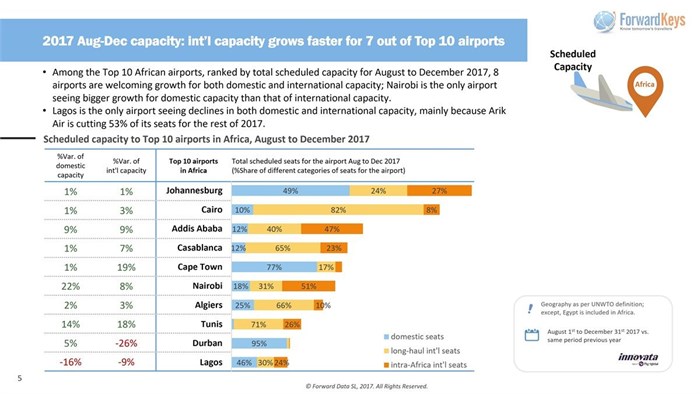
These findings are part of a wider report on travel to Africa, produced by ForwardKeys, which predicts future travel patterns by analysing 170 million booking transactions a day. It has shown double digit growth in flight arrivals for the first half of this year, with little indication that the pace of growth will slow down soon. The wider report makes for encouraging reading for airlines, governments and hoteliers planning to discuss possible new aviation routes at AviaDev in Kigali in October.
The report reveals that in the first seven months of the year, 1 January to 31 July 2017, total international flight arrivals grew by 14.0% over the same period in 2016. Most significantly, growth was stronger for travel to and from the continent than within the continent. Arrivals from Europe, which make up 46% of the market, were up 13.2%. From the Americas, arrivals were up 17.6%; from the Middle East, they were up 14.0% and from Asia Pacific, they were up 18.4%. By comparison, intra-African air travel, which makes up 26% of the market, was up by 12.6%.
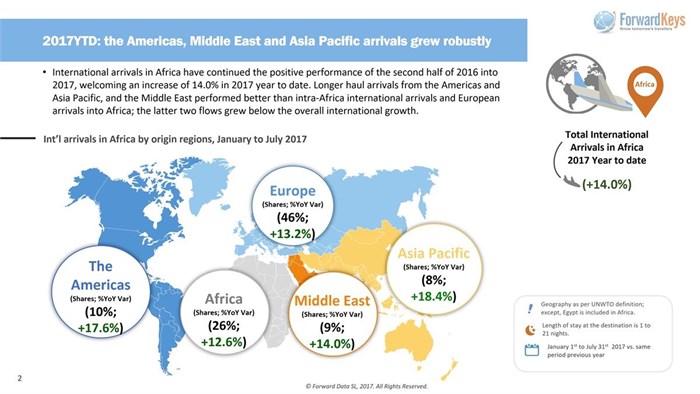
Looking at Africa’s top ten destination countries, there have been standout performances from both Tunisia and Egypt, which are up by 33.5% and 24.8%. In addition, Morocco and Tunisia received a huge boost in arrivals from China, which were up by 450% and 250% respectively, after they relaxed visa restrictions. The one disappointment is Nigeria, which has seen a 0.8% drop, in the wake of the recession in 2016, caused by a collapse in the oil price to a 13-year low.
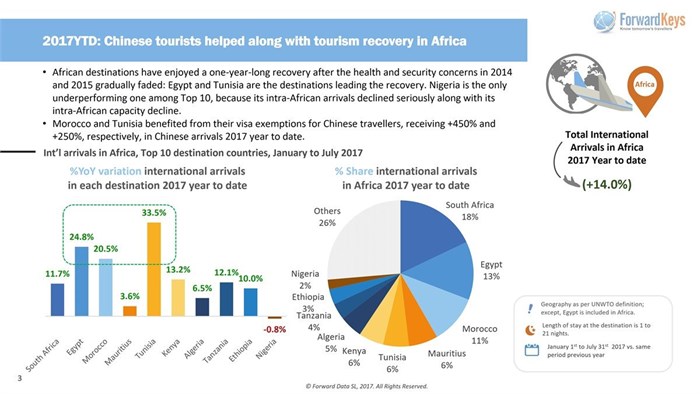
Looking forward to the end of the calendar year, bookings for flights to Africa are currently 16.8% ahead of where they were on 31 July 2016. Bookings from Europe are currently 17.5% a head, from the Americas 26.6% a head, from Asia Pacific 11.5% a head, from the Middle East 8.2% a head and bookings for intra-African air travel is 11.0% a head.
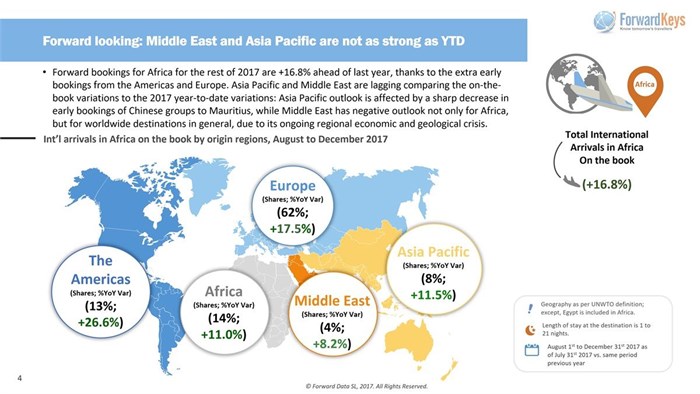
A specific look at East Africa shows very similar trends in the year to date performance and outlook to the end of the year. However, it has stronger forward bookings from Europe, 22.9% ahead and less strong forward bookings from elsewhere; the Americas are 15.5% ahead and intra-African air travel 7.6% ahead. However, bookings from the Middle East and Asia Pacific are 6.0% and 3.8% behind respectively.
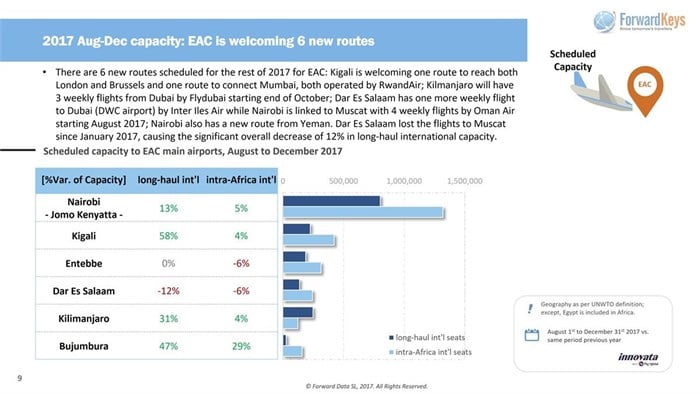
On an individual airport level, the most significant capacity increase in East Africa is at Kigali, with new routes to Brussels, London and Mumbai. Other notable new capacity includes Kilimanjaro to Dubai and Nairobi to Muscat and to Yemen.
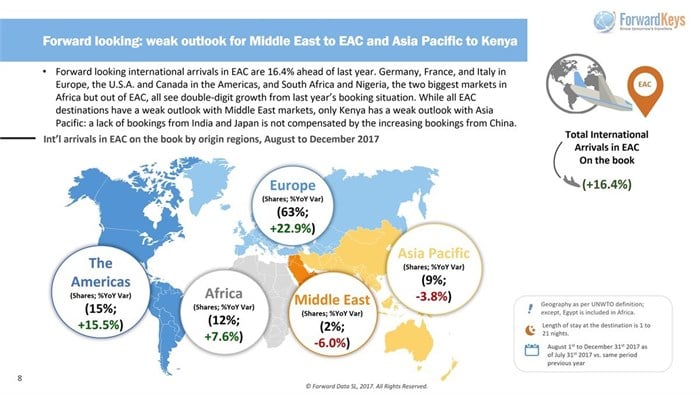
“The growth in air travel to Africa is impressive. However, it is notable that consumer demand and airline investment is greater in travel to African countries from outside the continent than it is between African countries,” Olivier Jager, CEO, ForwardKeys.
“As an international executive who has travelled around Africa for many years, I am longing for the day when it is easier to fly directly between African cities, as is possible on other continents. I am sure I’m not alone in that desire and I’m equally sure, it will happen eventually. That’s why I’m determined that the discussions that will take place at AviaDev will help bring that vision closer,” concluded Howell.























